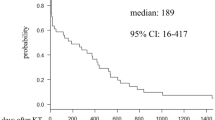Abstract
Objective
To evaluate the impact of urinary diversion on regular features of urinalysis and to screen for risk factors of infection-related complications.
Methods
We conducted a retrospective, single-centre study of 429 patients who underwent open radical cystectomy. Patients were followed for 12 months and data of the complete urinalyses were analysed at three pre-defined time points.
Results
Two weeks after surgery, dipstick testing with positive reactions for leukocyte esterase and haemoglobin were confirmed in 80.7% and 80% after ileal conduit (IC) and orthotopic ileal neobladder (NB), respectively. Every patient was positive for these parameters 12 months after surgery. Correspondingly, the microscopic examination detected leukocytes (84% vs. 85.4%), erythrocytes (82.8% vs. 83.8%) and bacteria (94.3% vs. 96.8%) following IC and NB reconstruction. After 12 months, all parameters were positive irrespective of the type of urinary diversion. Two weeks after surgery positive urine cultures were obtained in more than 50% of cases after IC (52.5%) and NB (60.5%) (p > 0.05). All urine cultures were positive after 12 months with significantly more poly-microbial results found after NB (81.3%) compared with IC (67.2%) (p = 0.018). In univariate and multivariate logistic regression analysis the presence of hydronephrosis was independently associated with the occurrence of infectious complications (OR 4.2; CI 95% 1.525–11.569; p = 0.006).
Conclusion
A positive urinalysis is a common finding after urinary diversion. Hydronephrosis is a serious risk factor with respect to infection-related complications. The simple fact of a positive urinalysis does not warrant antimicrobial treatment.
Similar content being viewed by others
References
Hautmann RE, de Petriconi RC, Volkmer BG (2010) Lessons learned from 1,000 neobladders: the 90-day complication rate. J Urol 184(3):990–994 (quiz 1235)
Hautmann RE, de Petriconi RC, Volkmer BG (2011) 25 years of experience with 1,000 neobladders: long-term complications. J Urol 185(6):2207–2212
Shabsigh A, Korets R, Vora KC, Brooks CM, Cronin AM, Savage C et al (2009) Defining early morbidity of radical cystectomy for patients with bladder cancer using a standardized reporting methodology. Eur Urol 55(1):164–174
Werntz RP, Martinez-Acevedo A, Amadi H, Kopp R, La Rochelle J, Koppie T et al (2018) Prophylactic antibiotics following radical cystectomy reduces urinary tract infections and readmission for sepsis from a urinary source. Urol Oncol. 36(5):238e1–e5
Wullt B, Holst E, Steven K, Carstensen J, Pedersen J, Gustafsson E et al (2004) Microbial flora in ileal and colonic neobladders. Eur Urol 45(2):233–239
Akerlund S, Campanello M, Kaijser B, Jonsson O (1994) Bacteriuria in patients with a continent ileal reservoir for urinary diversion does not regularly require antibiotic treatment. Br J Urol 74(2):177–181
Koves B, Cai T, Veeratterapillay R, Pickard R, Seisen T, Lam TB et al (2017) Benefits and harms of treatment of asymptomatic bacteriuria: a systematic review and meta-analysis by the European association of urology urological infection guidelines panel. Eur Urol 72(6):865–868
Bradbury SM (1988) Collection of urine specimens in general practice: to clean or not to clean? J R Coll Gen Pract 38(313):363–365
Lifshitz E, Kramer L (2000) Outpatient urine culture: does collection technique matter? Arch Intern Med 160(16):2537–2540
Giesen LG, Cousins G, Dimitrov BD, van de Laar FA, Fahey T (2010) Predicting acute uncomplicated urinary tract infection in women: a systematic review of the diagnostic accuracy of symptoms and signs. BMC Fam Pract 11:78
Ferlay J, Steliarova-Foucher E, Lortet-Tieulent J, Rosso S, Coebergh JW, Comber H et al (2013) Cancer incidence and mortality patterns in Europe: estimates for 40 countries in 2012. Eur J Cancer 49(6):1374–1403
Aghazadeh MA, Barocas DA, Salem S, Clark PE, Cookson MS, Davis R et al (2011) Determining factors for hospital discharge status after radical cystectomy in a large contemporary cohort. J Urol 185(1):85–89
Jacobs BL, Zhang Y, Tan HJ, Ye Z, Skolarus TA, Hollenbeck BK (2013) Hospitalization trends after prostate and bladder surgery: implications of potential payment reforms. J Urol 189(1):59–65
Stimson CJ, Chang SS, Barocas DA, Humphrey JE, Patel SG, Clark PE et al (2010) Early and late perioperative outcomes following radical cystectomy: 90-day readmissions, morbidity and mortality in a contemporary series. J Urol 184(4):1296–1300
Lavallee LT, Schramm D, Witiuk K, Mallick R, Fergusson D, Morash C et al (2014) Peri-operative morbidity associated with radical cystectomy in a multicenter database of community and academic hospitals. PLoS ONE 9(10):e111281
Nieuwenhuijzen JA, de Vries RR, Bex A, van der Poel HG, Meinhardt W, Antonini N et al (2008) Urinary diversions after cystectomy: the association of clinical factors, complications and functional results of four different diversions. Euro Urol 53(4):834–42 (discussion 42–4)
Hu M, Jacobs BL, Montgomery JS, He C, Ye J, Zhang Y et al (2014) Sharpening the focus on causes and timing of readmission after radical cystectomy for bladder cancer. Cancer 120(9):1409–1416
Suriano F, Gallucci M, Flammia GP, Musco S, Alcini A, Imbalzano G et al (2008) Bacteriuria in patients with an orthotopic ileal neobladder: urinary tract infection or asymptomatic bacteriuria? BJU Intern 101(12):1576–1579
Mano R, Baniel J, Goldberg H, Stabholz Y, Kedar D, Yossepowitch O (2014) Urinary tract infections in patients with orthotopic neobladder. Urol Oncol 32(1):50e9–e14
Kim KH, Yoon HS, Yoon H, Chung WS, Sim BS, Lee DH (2016) Febrile urinary tract infection after radical cystectomy and ileal neobladder in patients with bladder cancer. J Korean Med Sci 31(7):1100–1104
Author information
Authors and Affiliations
Corresponding author
Ethics declarations
Conflict of interest
The authors declare that they have no conflict of interest.
Informed consent
For this type of study formal consent is not required.
Human and animal rights
This article does not contain any studies with human participants or animals performed by any of the authors.
Additional information
Publisher's Note
Springer Nature remains neutral with regard to jurisdictional claims in published maps and institutional affiliations.
Rights and permissions
About this article
Cite this article
Magistro, G., Zimmermann, L., Bischoff, R. et al. The natural course of urinalysis after urinary diversion. World J Urol 39, 1559–1567 (2021). https://doi.org/10.1007/s00345-020-03355-0
Received:
Accepted:
Published:
Issue Date:
DOI: https://doi.org/10.1007/s00345-020-03355-0



